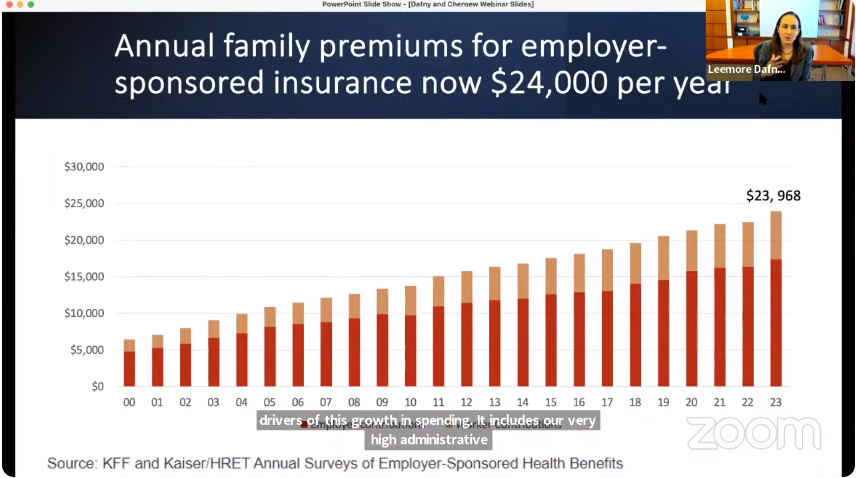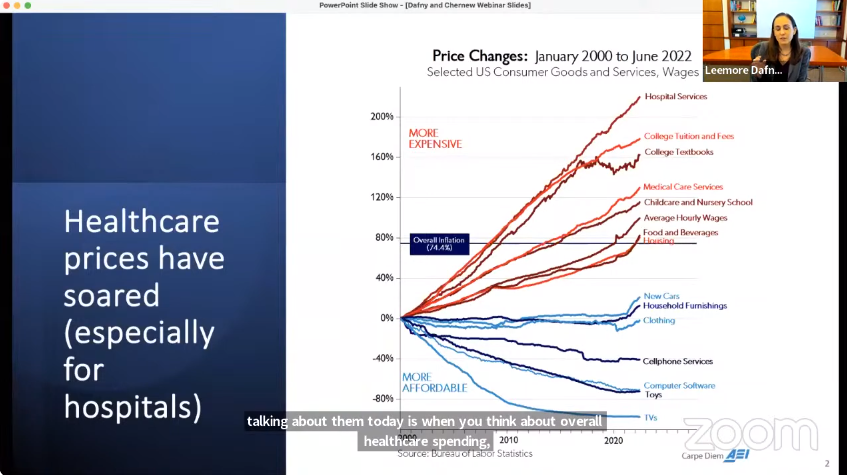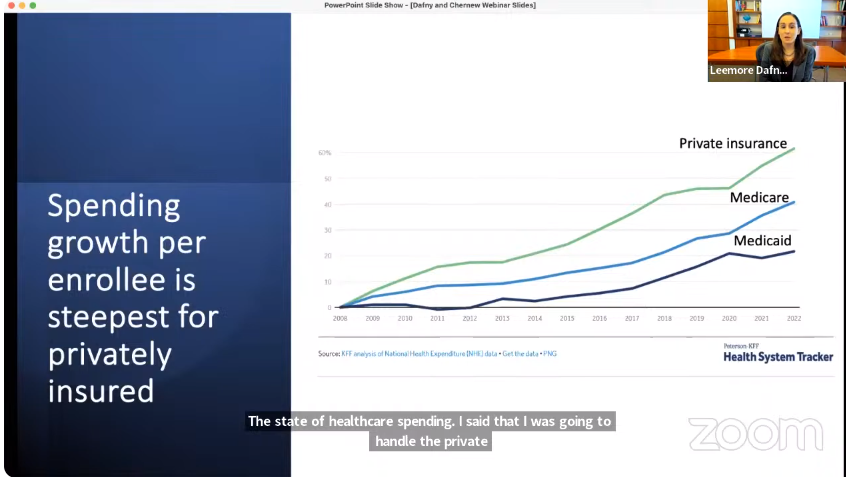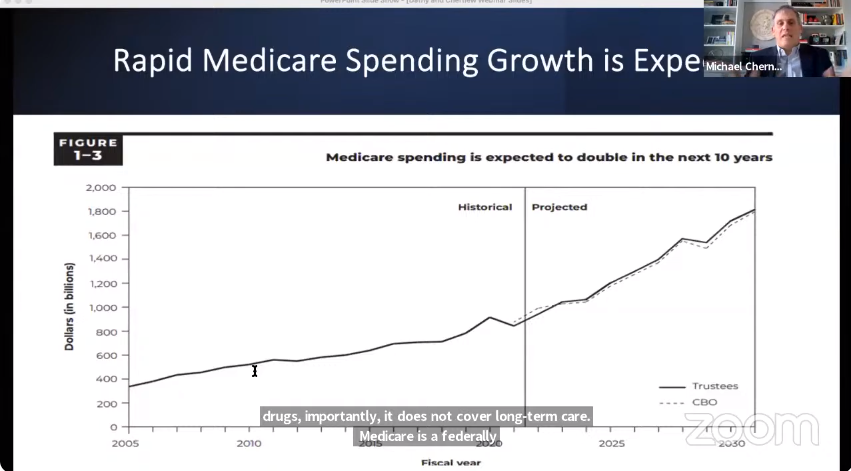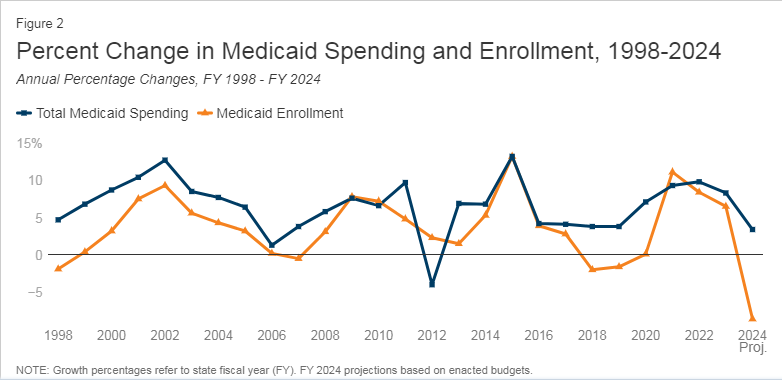Unraveling the Complexity of the U.S. Healthcare Spending Crisis
Hari Rathan • 2024-05-01
Foe decades there have been debates on how healthcare systems should operate , in this article we will discuss the US’s flaws
Recently, I was invited to a fantastic virtual event with world-renowned professionals where they discussed the topic of U.S Healthcare Spending. Harvard Business School - Professor Leemore Dafny and Harvard Medical School Professor - Michael Chernew mentioned that U.S healthcare spending is split into the public and private sectors. This article covers what was taught and the in-depth research that followed .
Leemore and Michael respectively focused on commercial private and federal public healthcare spending
For those who aren't aware of how the US healthcare system works I will explain some brief facts you should know before continuing . US healthcare is not free , so people (beneficiaries) have insurers to pay you some money to help cover the medical bill if you have an injury.
The above chart represents people with employer sponsored insurance with some costs from the employee , that accounts to a staggering 60 percent of the U.S population. The costs for employer and employees are steadily increasing
The dominant drivers of this growth and spending includes the U.S' extortionate administrative costs which stems partly from fierce competition between commercial insurers; surprisingly in the publicly insured sector as-well. Admin costs facilitate the use of expensive technologies however in recent years, specifically the wage-inflation of health-care providers.
The above presents costs above and below general inflation. Since the year 2000 through to 2022, Hospital Service prices have increased 220% per unit - Bureau of Labour Statistics. It reaches far beyond the 74% flat-line, signalling the U.S' growing economic problems due to their inability to effectively govern their healthcare industry.
Private insurance growth has been rapid relative to other forms of healthcare. On average, commercial insurance pays beneficieries twice Medicare's expenditure on Hospital Services, while further paying more for Physician Services .
What is Medicare? Medicare is the federal health insurance program for those who are: 65 or older, younger people with disabilities and people with End-Stage Renal Disease (permanent kidney failure requiring dialysis or a transplant, commonly referred to as ESRD). Despite not covering long-term healthcare, it covers physicians , hospitals , post-acute services and drugs, all while being funded by tax revenue. There are over 65 million beneficiaries. In 2021 it was spending about $850 billion dollar which is roughly a quarter of our national health expenditures
It's expected to double expenditure which has negative consequences for the general population. Spending is increasing as the average beneficiaries age increases making the new baby bloomers elegible for the program . The volume and intensity of services used includes: more visits, higher Covid-19 services or the increase in usage of MRI machines instead of CT scans. Therefore, the main drivers of spending in Medicare are volume and intensity. Spending increasing as this rate is bad and we will go more into detail later.
Medicaid is the children's federal health insurance program in the US that covers low-income adults and children . It also covers people with disabilities and most importantly it's a significant source of coverage for long-term care for those residing in nursing homes. There are 72 million beneficiaries in the Medicaid Program which is larger than Medicare despite around 40 million of them being children who are a relatively low cost. Furthermore, 42% of the births in the US are covered by Medicaid and the Medicaid Program's Affordable Care Act desires to expand .40 states and the district of Colombia have but 10 states have not .
What is the issue with price inflation?
- In the public sector healthcare is financed through taxes and so a lot of times we think we're having a debate about Healthcare when we're really having a debate about taxes and debt . There are concerns about high tax rates and the impacts on labor Supply . There is also alot of concern about whether or not getting value for what we're spending so the American Health Care system is hardly an efficient healthare system . There is alot of low value care in the American healthcare system , a lot of fragmented care causes a lot of concern that were're not practicing care particularly efficiently .
- The other concern is actually more in the private sector than the public sector but it's true in the public sector as well , the insurance companies when facing rising spending change aspects of the program often that involves things making it challenging for individuals to access cash for care for example in the public sector's Healthcare spending goes up the premiums for supplemental coverage rise people may then have less generous supplemental coverage making them have to pay more out of pocket .
- Additionally , even if we were efficient many think we are spending too much cause we are using taxes but most importantly we are taking away possible investments away from education , dealing with climate change and other areas . where there are problems businesses see opportunities and in the US right Healthcare is a a huge business even if you have public Insurance the provision of care is almost entirely by private entities not for profit and for profit so businesses have been a piece of this problem as they are profit driven where they exploit weaknesses in the American Healthcare System for gain .
Myths on how people think we can deal with this
- People think we can help the crisis by making people healthier byprevention as people think we save money as healthier people spend less on healthcare . The programs that are designed to keep people healthy don't actually save money . The programs themselves cost money and they aren't as effective as people think they are . It is very complicated we can't just snap our fingers and hope for the best .
- People think if prices where more transparent to consumers things will change there is evidence against that . Firstly subconsiously consumers don't look at prices usually before they buy . Secondly you don't have the option , usually you need to recieve that care and your going to buy and do what your doctor tells you to do .
See More Posts
Copyright © 2021 Govest, Inc. All rights reserved.

